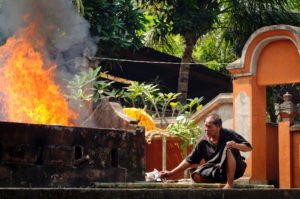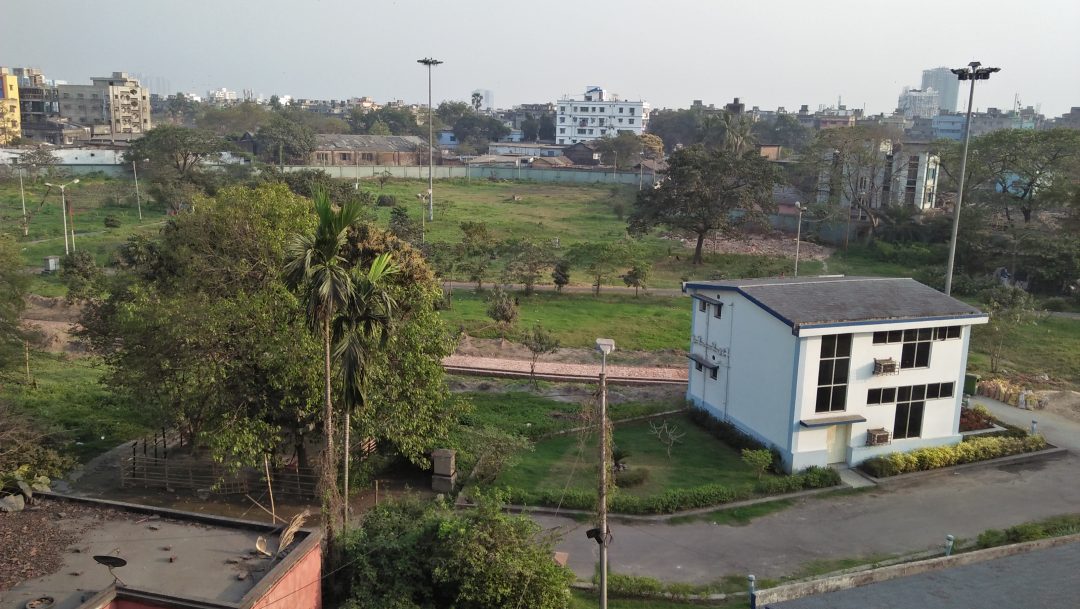Strictly speaking, most Hindus don’t believe in burying the body after death because of their beliefs about life after death and reincarnation but their funeral rites still take the release of the soul into consideration.
REINCARNATION
As with all religions, there are basic, fundamental beliefs which underpin Hinduism and reincarnation is one of them. This is all based on the dualistic nature of humans made up of both physical and non-physical matter (the soul).
 For the Western religions of Christianity, Islam, and Judaism, the soul goes either to heaven or hell; for the Eastern religions, including Hinduism, the soul is reincarnated into another creation.
For the Western religions of Christianity, Islam, and Judaism, the soul goes either to heaven or hell; for the Eastern religions, including Hinduism, the soul is reincarnated into another creation.
This is important because Hindus believe that when someone dies, their body is cremated to release the soul. Hence no burial, although some cultures will prefer to bury the bodies of babies rather than cremate them.
THE FUNERAL
This takes place as soon after death as possible for two main reasons: firstly to release the soul, and secondly because in many Hindu countries the hot weather means that dead bodies need to be disposed of quickly.
The body isn’t always touched because it’s considered dirty but often has to be moved a minimal amount for the funeral.
The funeral itself should really be as much a celebration as a remembrance service and this is displayed by offerings of flowers and sweetmeats at the funeral as well as a lot of noise, which is usually made by mourners playing horns and bells. Sometimes all male members of the family will shave their heads as a mark of respect.
The family will often wear the traditional white mourning clothes and pray over the dead body and then again by the funeral pyre. The death rites change according to the tradition and place of death, but some of the various rituals include: placing a lamp by the head of the body; prayers and hymns before the cremation; rice balls placed in the coffin or near the body; water sprinkled on the body; and a necklace of wooden beads or a garland of flowers placed around the neck of the deceased.
 The body is placed on a large funeral pyre, which is lit by the family’s eldest son, with the flames of the pyre representing Brahma, the god of creation.
The body is placed on a large funeral pyre, which is lit by the family’s eldest son, with the flames of the pyre representing Brahma, the god of creation.
After the funeral, there are 13 days of mourning and the death is usually remembered and marked a year later with offerings and sometimes it becomes an annual event.
THE ASHES
The ashes are collected and disposed of respectfully. Many people try to scatter the ashes in the River Ganges because it’s considered a holy river and so will release the soul or spirit immediately from the continuous cycle of birth, death, and rebirth (samsara) and send it straight to be with God in heaven or Nirvana (a state known as moksha).
FUNERALS IN THE WEST
Away from India, many Hindu funerals try to follow a similar pattern. The body is cremated and the ashes are scattered; some families, if possible, will send the ashes back to relatives in India to have them scattered in the River Ganges, but this isn’t very common. Yet the essence of celebration and mourning continues in Hindu funerals all around the world.






